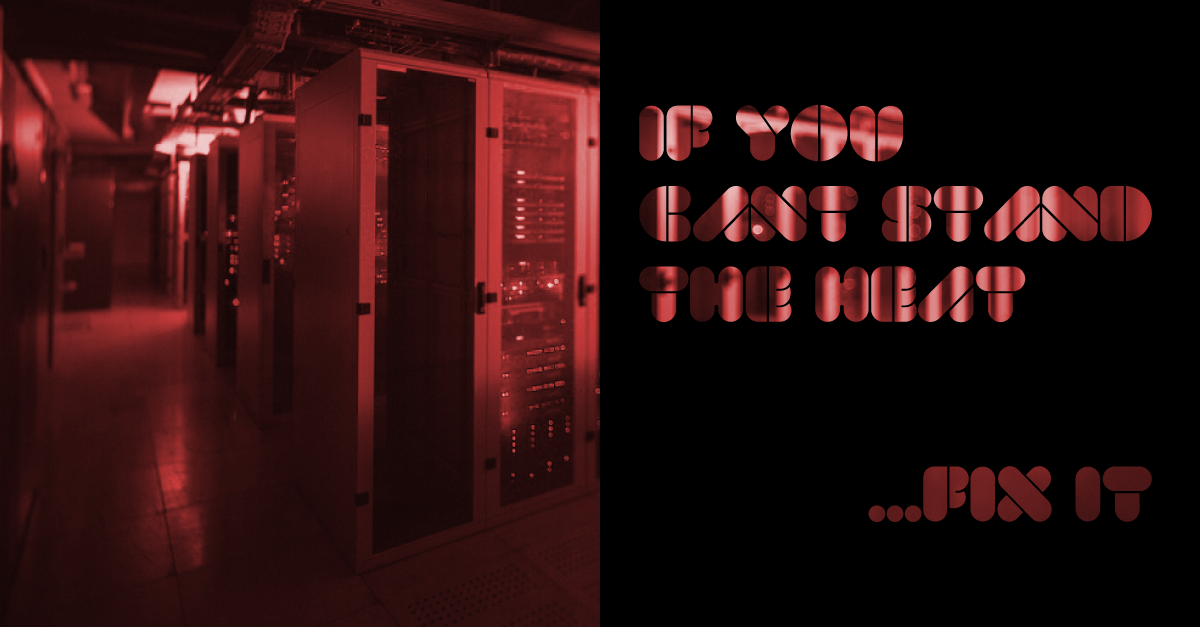If You Can’t Stand The Heat … Fix It
Josh Schaap
August 06, 2016
- Categories:
- Tags:

When President Harry S. Truman coined the phrase, “If you don’t like the heat, get out of the kitchen,” in 1942, he was referring to critics of his aggressive use of war contracts in the Second World War. Good advice for politics, perhaps, but not so much for data center management. In fact, when the heat becomes an issue in your data center, it’s time to do something about it.
Each kW hour of server power creates an equivalent amount of heat. Over time, this heat can accumulate, impacting server performance. You can monitor this within the cabinet, zone, and location levels. While servers have been adapted to withstand higher temperatures, computing power is rising, and this is generating more heat. Add on top of this the growth of virtualized servers leading to fewer idling computers, and you have an endless cycle of heat generation.
The fact is that many power and cooling systems can’t efficiently meet the demands of today’s data center. The perimeter-based CRAC units of yesterday were sufficient when rack densities hovered at the 2-4 kW per rack range, but this doesn’t really work in a modern data center.
The two main problems that currently exist are:
- More heat means more cooling infrastructure is required. New servers and switches can create 10 times the heat per square foot as those made 10 years ago.
- Often, high-density servers are installed in the same data centers as prior generation systems. Because of this, rack densities aren’t increasing evenly across the data center, leading to areas that are hotter than others. Bottom-of-the-rack equipment may consume so much of the cooler air that any remaining cold air isn’t enough to cool top-of-the-rack equipment.
The Power Strategy Experts at Server Technology offer a couple of tips to follow in order to keep cool and carry on in your data center.
- Monitor, monitor, monitor: Monitoring is crucial at the branch and in-feed levels for capacity planning purposes if you’re looking to identify zombie servers and stranded capacity. Doing so will help achieve higher efficiency. As Calvin Nicholson, Server Technology’s Senior Director of Software and Firmware Development, says, “you can’t manage what you don’t monitor.” Monitoring tools such as Sentry Power Manager help companies report on and track device-specific power consumption.
- Provisioning: It’s vital that data center operators not only embrace the idea of provisioning but that they act upon it. Often, companies overprovision power to under-used cabinets, wasting money. As real estate costs rise, it’s getting harder and harder to justify this sort of practice. And, provisioning the wrong type of power can also negatively impact data center operations. Server Technology recommends provisioning at a higher power source such as 415V.
Thanks for your submission. One of our Power Strategy Experts will get back to you shortly.